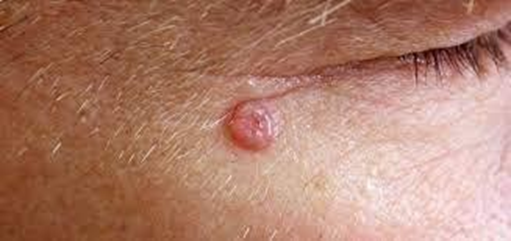A nurse is planning care for a client who has an infected wound with significant exudate.
The nurse should plan to use which of the following dressings to cover the wound?
Polymeric membrane dressing
Hydrofiber dressing
Hydrogel dressing
Hydrocolloid dressing
The Correct Answer is B
Choice A rationale: this is a type of non-adherent dressing that can be used for wounds with minimal exudates hence this is not suitable for wounds with significant exudate since it causes maceration and leakage.
Choice B rationale: this is an absorbent dressing that can be used in wounds with moderate-significant exudate since it moistens the wound environment while facilitating autolytic debridement by forming a gel in contact with the exudate.
Choice C rationale: this is a type of hydrating dressing containing water or glycerin-based gel that is suitable for use in wounds with minimal exudate.
Choice D rationale: this is a type of occlusive dressing suitable for wounds with minimal-moderate exudates. It is unsuitable for wounds with significant exudate since it can result in maceration and leakage.
Nursing Test Bank
Naxlex Comprehensive Predictor Exams
Related Questions
Correct Answer is A
Explanation
Choice A rationale: Basal cell carcinoma commonly presents as a small, translucent papule with rolled borders. It may have a pearly or shiny appearance and often develops on sun-exposed areas, such as the nose.
Choice B rationale: This description is more characteristic of melanoma, not basal cell carcinoma.
Choice C rationale: This description may be more indicative of squamous cell carcinoma.
Choice D rationale: This description does not align with the typical presentation of basal cell carcinoma.

Correct Answer is A
Explanation
Choice A rationale: the epidermis which is the most superficial layer of the skin relies on the dermis for nutrition since it lacks its own blood supply.
Choice B rationale: adipose tissue is contained in the hypodermis which is part of the dermis layer of the skin and not the epidermis.
Choice C rationale: nerve fibers are contained in the dermis layer of the skin and not the epidermis.
Choice D rationale: blood vessels are contained in the dermis layer of the skin and not the epidermis.
Whether you are a student looking to ace your exams or a practicing nurse seeking to enhance your expertise , our nursing education contents will empower you with the confidence and competence to make a difference in the lives of patients and become a respected leader in the healthcare field.
Visit Naxlex, invest in your future and unlock endless possibilities with our unparalleled nursing education contents today
Report Wrong Answer on the Current Question
Do you disagree with the answer? If yes, what is your expected answer? Explain.
Kindly be descriptive with the issue you are facing.
